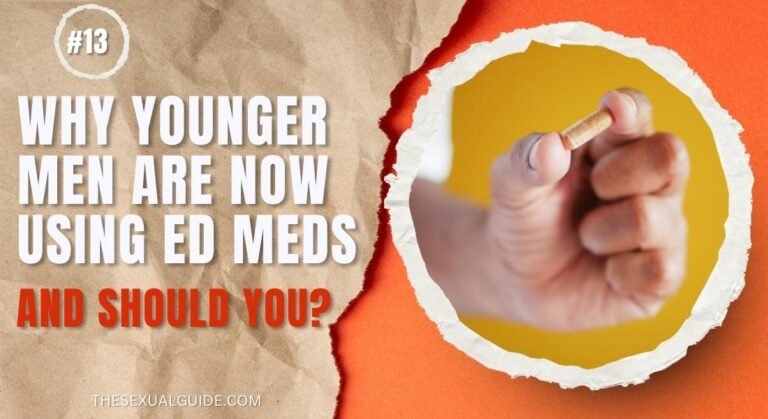Erectile dysfunction (ED) affects millions of men worldwide, impacting confidence, relationships, and overall well-being.
With advancements in technology, various apps and gadgets now promise to help. But do they work?
Let’s explore how technology is changing ED treatment and whether these tools live up to the hype.
How Technology is Changing ED Treatment
Traditional treatments for ED include lifestyle changes, medications, therapy, and medical procedures. Now, technology offers new solutions that focus on monitoring, improving, and even reversing ED through data-driven approaches.
1. Mobile Apps for ED Management
Several mobile apps claim to help men manage and improve erectile function by addressing key factors such as stress, anxiety, and fitness. Here are some ways they work:
- Tracking Progress: Some apps allow users to monitor their sexual health over time, identifying patterns and triggers.
- Guided Therapy: Cognitive Behavioral Therapy (CBT)-based apps offer exercises to reduce performance anxiety and boost confidence.
- Lifestyle Coaching: Apps focus on diet, exercise, and mental health, key factors in improving erectile function.
Notable Apps:
- Eddie by Giddy: Provides educational content and progress tracking.
- Blueheart: Uses CBT techniques for sexual confidence.
- Pelvic Coach: Offers exercises to strengthen pelvic muscles, improving erectile function.
2. Wearable Devices & Smart Gadgets
Wearable tech is revolutionizing ED treatment by offering real-time data and non-invasive solutions. Some gadgets claim to enhance blood flow and nerve sensitivity, leading to improved erections.
- Smart Rings & Sensors: These track nocturnal erections, helping doctors diagnose underlying causes of ED.
- Pelvic Floor Trainers: Devices like Kegel exercisers strengthen muscles responsible for better sexual function.
- Electrostimulation Devices: Some gadgets use mild electrical impulses to stimulate nerve activity and blood flow in the pelvic region.
Popular Devices:
- The Phoenix: A shockwave therapy device for home use, aimed at improving circulation.
- MYHIXEL: A device designed for climax control, indirectly benefiting erectile strength.
3. Telemedicine and Online ED Treatment
Online platforms are making ED treatment more accessible than ever. Men can now consult doctors, receive prescriptions, and follow treatment plans, all from home.
- Virtual Consultations: Telehealth services connect users with specialists for discreet medical advice.
- Prescription Services: Online pharmacies offer ED medications after a remote consultation.
- Personalized Treatment Plans: AI-powered health platforms provide customized recommendations based on medical history and symptoms.
4. Virtual Reality (VR) and Mindfulness Training
Stress and anxiety contribute to ED. VR and mindfulness apps aim to reduce performance pressure and improve sexual confidence.
- Guided Relaxation: VR environments provide immersive relaxation experiences.
- Mindfulness Meditation: Apps like Headspace and Calm help manage stress levels, indirectly benefiting erectile function.
- Biofeedback Therapy: Smart devices track physiological responses, helping users learn relaxation techniques.
Do These Technologies Really Work?
While technology offers promising solutions, results vary.
Apps and gadgets work best when used alongside traditional treatments like exercise, a balanced diet, and medical consultation.
Pros:
✔️ Convenient and discreet
✔️ Can complement existing treatments
✔️ Encourages lifestyle improvements
✔️ Provides real-time tracking and data
Cons:
❌ Limited scientific backing for some gadgets
❌ Not a one-size-fits-all solution
❌ May require consistent use for noticeable results
Conclusion
Technology is transforming how men manage ED, offering innovative and accessible solutions.
While apps, gadgets, and telemedicine provide valuable support, they should not replace professional medical advice.
The key to success lies in a well-rounded approach that includes healthy lifestyle choices, psychological well-being, and professional guidance.
Frequently Asked Questions (FAQs)- Erectile Dysfunction and Technology: Can Apps and Gadgets Really Help?
1. Can mobile apps really help with erectile dysfunction?
Yes, several apps are designed to support men with ED by offering guided exercises (like pelvic floor training), tracking lifestyle factors (such as sleep, stress, and exercise), and providing access to telemedicine consultations or therapy, all of which can contribute to improved erectile health over time.
2. What kinds of gadgets are available to help with ED?
Innovative gadgets include wearable erection monitoring devices, smart vibratory stimulators, and vacuum erection devices (VEDs). Some high-tech solutions also include penile bands with biofeedback features or shockwave therapy devices used under professional supervision.
3. Are digital therapies and app-based coaching effective for psychological causes of ED?
Yes. For ED linked to stress, anxiety, or performance pressure, app-based cognitive behavioral therapy (CBT), mindfulness training, and sex therapy modules can be highly effective. These digital tools provide private, convenient, and structured support for addressing the mental side of ED.
4. How accurate and safe are tech-based ED solutions?
When used as recommended, especially under medical guidance, many tech-based ED tools are both safe and helpful. However, effectiveness varies depending on the product and the cause of ED. Always consult a healthcare provider before relying solely on tech-driven approaches.
References
- Erectile dysfunction
- The Psychology of Erectile Dysfunction
- "Wearable Tech and Sexual Health: What the Science Says." Journal of Sexual Medicine, 2022.
- "Cognitive Behavioral Therapy for Erectile Dysfunction." American Psychological Association, 2023.






